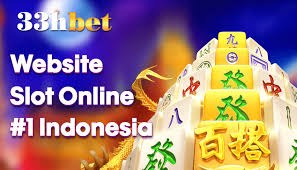
The Joker card is one of the most intriguing and versatile cards in a deck of playing cards. Its mysterious role, along with its ambiguity and association with trickery, gives it a unique place in both card games and popular culture. In this article, we will delve into the history, jokercard, and modern interpretations of the Joker card.
1. The Origins of the Joker Card
The Joker card’s origins trace back to the mid-19th century in the United States. It was first introduced as a trump card for a popular game called Euchre. In Euchre, an extra card known as the “Best Bower” or “Imperial Bower” was used as the highest-ranking card, and this eventually evolved into what we now know as the Joker card.
Unlike the standard 52-card deck that follows suits and ranks, the Joker card stands alone, not belonging to any suit or rank. Its status as a wildcard made it an essential component in many games, where it can represent any card or special powers depending on the rules.
2. The Symbolism Behind the Joker
The Joker card is often viewed as a symbol of unpredictability, chaos, and duality. Its role in card games varies greatly—sometimes it is a hero, other times a villain. This unpredictability gives the Joker a certain mystique.
- Duality: The Joker, in essence, embodies duality. It can be seen as both a symbol of humor and malevolence, representing both the “fool” in a light-hearted manner and the “trickster” in a darker, more cunning sense.
- Chaos and Balance: In games, the Joker can throw off the balance of a hand, adding an element of surprise and disorder. But in this chaos, there is also balance, as the Joker can either help or hinder a player’s strategy.
- Fool Archetype: The Joker is often associated with the fool or jester, a figure that dates back to medieval courts. Jesters were performers who entertained royals with jokes, acrobatics, and songs, but they were also known for their sharp wit, often speaking truths that others could not. This connection adds to the Joker card’s role as an unpredictable and potentially insightful figure.
3. The Joker Card in Modern Popular Culture
In addition to its use in card games, the Joker card has gained prominence in popular culture, particularly through its association with comic book characters, films, and literature.
- Comics and Films: One of the most famous interpretations of the Joker is in DC Comics, where the “Joker” is the notorious villain and archenemy of Batman. This version of the Joker is the embodiment of chaos, madness, and anarchy. The card is often shown as a calling card left by the character to signify his presence.
- Movies and Literature: In films like The Dark Knight and Joker, the character portrays complex psychological traits, mirroring the card’s themes of unpredictability and duality. The Joker has become more than just a villain—he’s a symbol of societal breakdown and personal conflict.
- Art and Design: The Joker card’s imagery—often depicting a jester or clown—has become iconic. Artists and designers frequently use it to evoke feelings of rebellion, mystery, and disruption.
4. The Joker Card in Card Games
In contemporary card games, the Joker is often used as a wildcard, giving it the power to substitute for any other card. Its role varies between different games:
- Poker: In some variations of poker, such as “Joker Poker,” the Joker acts as a wildcard that can complete any hand, making it extremely valuable.
- Canasta: In Canasta, the Joker is a key card, used as one of the highest-ranking cards and granting significant advantages to players who hold it.
- Rummy: The Joker is used in many variations of Rummy as a wildcard, adding flexibility and complexity to the game.
5. Modern Interpretations and Philosophy
Beyond its traditional uses, the Joker card has found its place in philosophical and psychological discussions. The card’s representation of chaos, unpredictability, and the absurdity of life can be seen in various forms of media, from existential literature to modern-day storytelling.
Some view the Joker as a metaphor for life’s unpredictability—a reminder that, no matter how carefully we plan, there will always be an element of the unknown and uncontrollable. It also symbolizes the thin line between sanity and madness, truth and deception, order and chaos.
Conclusion
The Joker card, with its origins in 19th-century card games, has evolved into a potent symbol in modern culture. Whether as a wildcard in a deck of cards or a symbol of chaos in literature and film, the Joker continues to intrigue and captivate. Its unique position as a card that doesn’t belong to any suit, along with its flexible role, speaks to its power of unpredictability, making it a fascinating topic of both gaming and cultural discussion.


